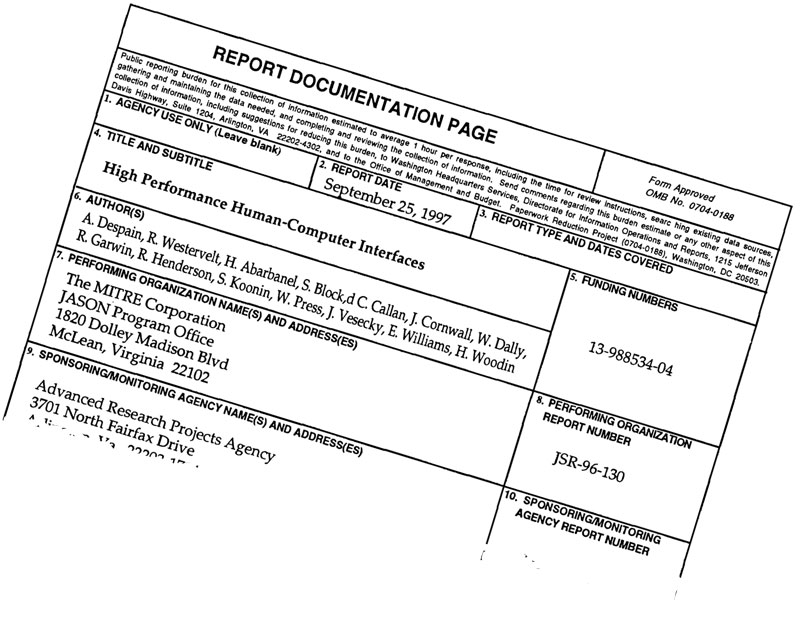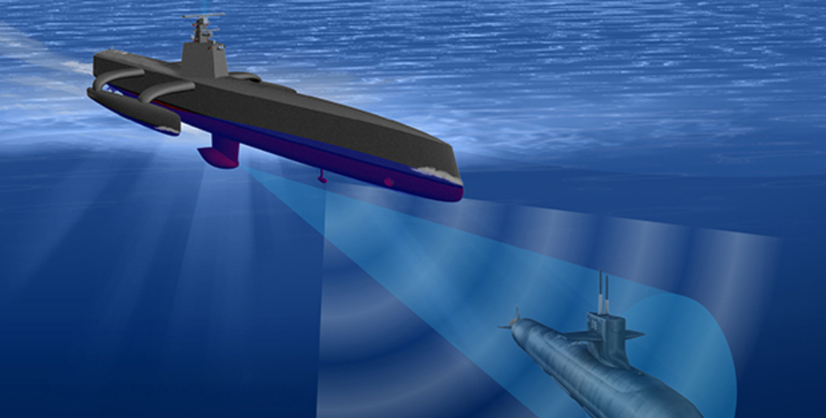Posted on Apr.10, 2019 in Dept of Defense, Science by Steven Aftergood
Updated below
In a startling blow to the system of independent science and technology advice, the Department of Defense decided not to renew its support for the JASON defense science advisory panel, it was disclosed yesterday.
“Were you aware that [the JASON contract] has been summarily terminated by the Pentagon?”
That was one of the first questions asked by Rep. Jim Cooper, chair of the House Armed Services Committee Strategic Forces Subcommittee, at a hearing yesterday (at about 40’20”).
NNSA Administrator Lisa Gordon-Hagerty replied that she was aware that the Pentagon had taken some action, and said that she had asked her staff to find out more. She noted that NNSA has an interest in maintaining the viability of the JASON panel, particularly since “We do have some ongoing studies with JASON.”
In fact, JASON performs technical studies for many agencies inside and outside of the national security bureaucracy and it is highly regarded for the quality of its work.
So why is the Pentagon threatening its future?
Even to insiders, the DoD’s thought process is obscure and uncertain.
“To understand it you first have to understand the existing contract structure,” one official said. “This is a bit arcane, but MITRE currently has an Indefinite Delivery / Indefinite Quantity (IDIQ) contract with the Office of the Secretary of Defense (OSD), the purpose of which is to manage and operate the JASON effort. However, you don’t actually do anything with an IDIQ contract; rather, the purpose of the IDIQ contract [is to] have Task Orders (TO’s) placed on it. These TO’s are essentially mini-contracts in and of themselves, and all the actual work is performed according to the TO’s. This structure allows any government agency to commission a JASON study; conceptually, all you need to do is just open another TO for that study. (The reality is slightly more complicated, but that’s the basic idea).”
“The underlying IDIQ contract has a 5-year period of performance, which just expired on March 31. Last November, OSD started the process of letting a new 5-year IDIQ contract with essentially the same structure so that the cycle could continue. They decided to compete the contract, solicited bids, and were going to announce the contract award in mid-March. Instead, what happened is that about two weeks ago (March 28, two days before the expiration of the existing IDIQ contract) they announced that they were canceling the solicitation and would not be awarding another contract at all. Instead, they offered to award a single contract for a single study without the IDIQ structure that allows other agencies to commission studies.”
But “I do not know the reason” for the cancellation, the official said.
And so far, those who do know are not talking. The Office of the Under Secretary of Defense (Research and Engineering) “would not answer any questions or discuss the matter in any way whatsoever.”
The news was first reported in “Storied Jason science advisory group loses contract with Pentagon” by Jeffrey Mervis and Ann Finkbeiner in Science magazine, and was first noticed by Stephen Young.
The JASON panel has performed studies (many of which are classified) for federal agencies including the National Nuclear Security Administration, the Central Intelligence Agency and the National Reconnaissance Office, as well as the Census Bureau and the Department of Health and Human Services.
Lately, the Department of Agriculture denied a Freedom of Information Act request for a copy of a 2016 JASON report that it had sponsored entitled “New Techniques for Evaluating Crop Production.” The unclassified report is exempt from disclosure under the deliberative process privilege, USDA lawyers said. That denial is under appeal.
The Pentagon move to cancel the JASON contract appears to be part of a larger trend by federal agencies to limit independent scientific and technical advice. As noted by Rep. Cooper at yesterday’s hearing, the Navy also lately terminated its longstanding Naval Research Advisory Committee.
Update, 4/25/19: National Public Radio and Defense News reported that the National Nuclear Security Administration has posted a solicitation to take over the JASON contract from the Department of Defense.
https://fas.org/blogs/secrecy/2019/04/pentagon-jason/
Pentagon's Independent Science Research Group, the Jasons, Is Set to Disband After 59 Years

Matt Novak
4/25/19 11:15am
Filed to: JASONS

Filed to: JASONS

An aerial view of the Pentagon in the mid-1960s
Photo: Brian Parker/U.S. Military
The Jason Group, an independent panel of academics who have advised the Pentagon for the past 59 years, will likely disband on April 30. The group had hoped to get a one-year extension to continue its work.
The Jasons was founded in 1960 as a scientific advisory panel that helped the Pentagon solve some of the most complex problems facing the U.S. military. The early days of the Jasons focused primarily on physics problems, but over the last six decades, the panel’s roughly 50 members have expanded their research to include studies on topics like artificial intelligence, health care, and climate change.
The Jason contract is managed by the MITRE Corporation, which allowed the group’s contract with the Department of Defense to expire on March 31, 2019. The Jasons advise other agencies like the Department of Energy, but without MITRE’s sponsorship, the group will have to dissolve completely and end all current studies for the DOE and other agencies by April 30.
“The department has determined that the requirements previously supported through JASON National Security Research Studies have changed and that the Office of the Undersecretary of Defense, Research and Engineering will require only one study, rather than multiple studies, as projected under the previous solicitation,” Pentagon spokeswoman Heather Babb told Gizmodo via email. “Because our requirements have changed, the DOD does not anticipate issuing a follow-on Indefinite Delivery Indefinite Quantity (IDIQ).”
That means that the next meeting of the Jasons will likely be their last. And the group’s snacks won’t even be paid for during their farewell, according to one member.
“There is a very real chance that the Jason advisory group will effectively be disbanded shortly after the spring meeting, under circumstances that will make its recovery unlikely,” Ellen Williams, vice chair of the Jasons, told Science magazine in an article published on Wednesday. “This is despite the indication of intent at high levels across the U.S. government to resolve the present situation by extending the Jason contract for 1 year.”
The Jasons were formerly sponsored by Darpa and had a near-death experience back in 2002 when the group was pushed out by then-Darpa director Tony Tether. But the group found a new sponsor with the MITRE Corporation that allowed the panel to continue its work.
“The Jasons were, and I don’t mean to be insulting to them, but let’s just say peaceniks,” former Darpa director of the 1970s Steve Lukasik told me in 2015 for a story about the use of computers during the Vietnam War.
Some Fellow researchers in other areas of government see the disbanding of the Jasons as a mistake. Nickolas Roth, who studies nuclear policy at Harvard’s Belfer Center for Science and International Affairs, told Gizmodo earlier this month that losing the Jasons would be “profoundly misguided” and a “significant loss” of expert voices that are needed right now.
But it looks like this is the end for the Jasons and their 60-year history of independent research. And the military is doing its best to position this as a simple way to save money
“The department remains committed to seeking independent technical advice and review,” Pentagon spokeswoman Heather Babb told Gizmodo. “This change is in keeping with this commitment while making the most economic sense for the department, and it is in line with our efforts to gain full value from every taxpayer dollar spent on defense.”
Perhaps the Pentagon should become acquainted with the phrase, “penny wise, pound foolish.”

The Jason Group, an independent panel of academics who have advised the Pentagon for the past 59 years, will likely disband on April 30. The group had hoped to get a one-year extension to continue its work.
The Jasons was founded in 1960 as a scientific advisory panel that helped the Pentagon solve some of the most complex problems facing the U.S. military. The early days of the Jasons focused primarily on physics problems, but over the last six decades, the panel’s roughly 50 members have expanded their research to include studies on topics like artificial intelligence, health care, and climate change.
The Jason contract is managed by the MITRE Corporation, which allowed the group’s contract with the Department of Defense to expire on March 31, 2019. The Jasons advise other agencies like the Department of Energy, but without MITRE’s sponsorship, the group will have to dissolve completely and end all current studies for the DOE and other agencies by April 30.
“The department has determined that the requirements previously supported through JASON National Security Research Studies have changed and that the Office of the Undersecretary of Defense, Research and Engineering will require only one study, rather than multiple studies, as projected under the previous solicitation,” Pentagon spokeswoman Heather Babb told Gizmodo via email. “Because our requirements have changed, the DOD does not anticipate issuing a follow-on Indefinite Delivery Indefinite Quantity (IDIQ).”
That means that the next meeting of the Jasons will likely be their last. And the group’s snacks won’t even be paid for during their farewell, according to one member.
“There is a very real chance that the Jason advisory group will effectively be disbanded shortly after the spring meeting, under circumstances that will make its recovery unlikely,” Ellen Williams, vice chair of the Jasons, told Science magazine in an article published on Wednesday. “This is despite the indication of intent at high levels across the U.S. government to resolve the present situation by extending the Jason contract for 1 year.”
The Jasons were formerly sponsored by Darpa and had a near-death experience back in 2002 when the group was pushed out by then-Darpa director Tony Tether. But the group found a new sponsor with the MITRE Corporation that allowed the panel to continue its work.
Journalist Ann Finkbeiner’s 2006 book The Jasons: The Secret History of Science’s Postwar Elite, details the storied history of the organization, including some of its most controversial work done during the Vietnam War. But despite previous controversies, the Jasons were widely regarded as a much-needed independent voice that could speak freely with the Pentagon when other advisors might just tell U.S. military leaders what they wanted to hear. That adversarial voice was sometimes criticized by the military establishment as a hippie mindset.
“The Jasons were, and I don’t mean to be insulting to them, but let’s just say peaceniks,” former Darpa director of the 1970s Steve Lukasik told me in 2015 for a story about the use of computers during the Vietnam War.
Some Fellow researchers in other areas of government see the disbanding of the Jasons as a mistake. Nickolas Roth, who studies nuclear policy at Harvard’s Belfer Center for Science and International Affairs, told Gizmodo earlier this month that losing the Jasons would be “profoundly misguided” and a “significant loss” of expert voices that are needed right now.
But it looks like this is the end for the Jasons and their 60-year history of independent research. And the military is doing its best to position this as a simple way to save money
“The department remains committed to seeking independent technical advice and review,” Pentagon spokeswoman Heather Babb told Gizmodo. “This change is in keeping with this commitment while making the most economic sense for the department, and it is in line with our efforts to gain full value from every taxpayer dollar spent on defense.”
Perhaps the Pentagon should become acquainted with the phrase, “penny wise, pound foolish.”

Call it “The Jason Mystery.” No, not Jason Bourne, Matt Damon’s tortured cinematic assassin. This would be Jason, the independent but less-than-widely known group of top-level experts that has long studied security-related science and technology matters for the US Defense and Energy departments and the intelligence community.
Science reported this week that the Defense Department has told the MITRE Corporation, a nonprofit that manages the Jason contract with Defense, to “close up shop by April 30.” Begun in the 1950s and named for the Golden Fleece-seeking character of Greek mythology, the Jasons (as they sometimes are referenced) have over five decades produced a wide variety of classified and unclassified reports on thorny security issues, from the state of the US nuclear deterrent to ways that carbon dioxide emissions might be measured for climate treaty purposes. (The Federation of American Scientists has an interesting selection of non-classified Jason studies here.)
So far, I have seen no official explanation for the Jason contract cancellation, which was met with Twitter blasts of exasperation from experts who know the value of Jason research.
The import of the end of the Jasons’ Defense contract is perhaps best summarized by a few paragraphs from a New York Times review of science writer Ann Finkbeiner’s book, The Jasons: The Secret History of Science’s Post-war Elite.
Jason (the term refers both to the group as a whole and to individual members) was conceived in the late 1950’s, when the physicist John Wheeler proposed assembling a few dozen top academic scientists to give the government no-holds-barred advice. In 1960 the group began gathering each June and July in various locations. Physics was still riding the wave of prestige generated by the Manhattan Project, and all the original Jasons were physicists. …
Those who eventually enlisted included giants like [Freeman] Dyson, Murph Goldberger and the future Nobel laureates Steven Weinberg, Val Fitch, Charles Townes, Murray Gell-Mann and Leon Lederman. Some of their motives, like serving their country and reducing the threat of nuclear war, were altruistic. Others were less so: becoming an insider with access to secret information; finding “sweet” solutions to technical puzzles (to borrow Robert Oppenheimer’s description of the Manhattan Project); and getting paid ($850 per diem today).
The Jasons interviewed take pride in some of their accomplishments. They have excelled at “lemon detection,” finding the flaws in ideas like “dense pack” nuclear-missile sites, which one Jason, Sid Drell, called “dunce pack.” In the 1980s, Jason helped establish a Department of Energy program to improve the accuracy of climate models. In 1996 Bill Clinton signed the Comprehensive Test Ban Treaty, in part because Jason had concluded that tests were no longer needed to ensure the viability of America’s nuclear arsenal.
The Jasons certainly have been fallible. Some of the group’s Vietnam-era studies (including one on the potential use of tactical nuclear weapons) were excoriated on ethical grounds, a judgment with which even some of the scientists involved later came to agree. Even so, a decision that could mark an end to the Jason era of unblinkered expert advice to America’s security services would seem to call for public discussion, and perhaps even congressional inquiry.
Publication Name: Science









Last-minute intervention saves JASON government advisory panel from closure
New offer